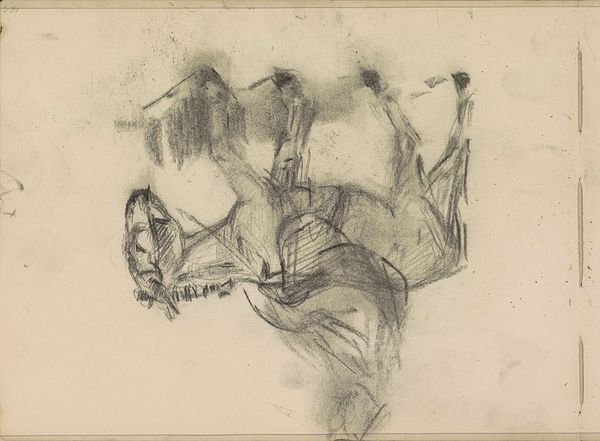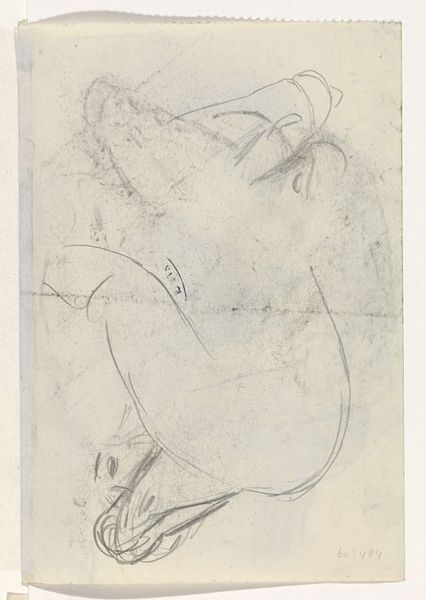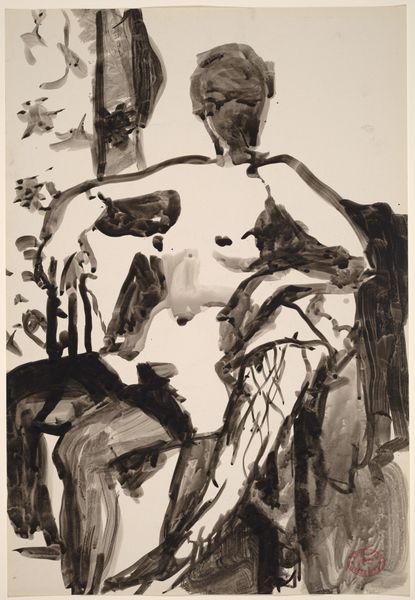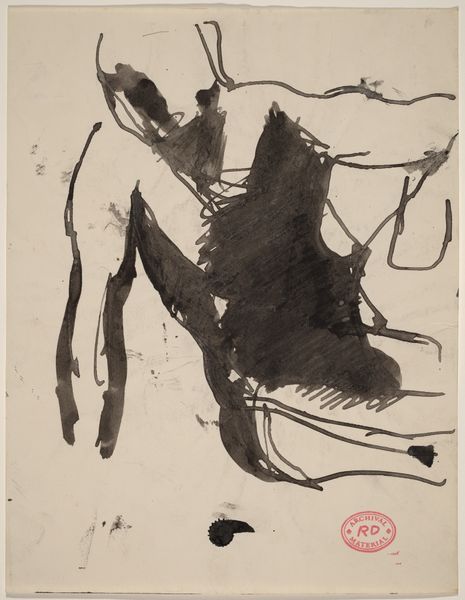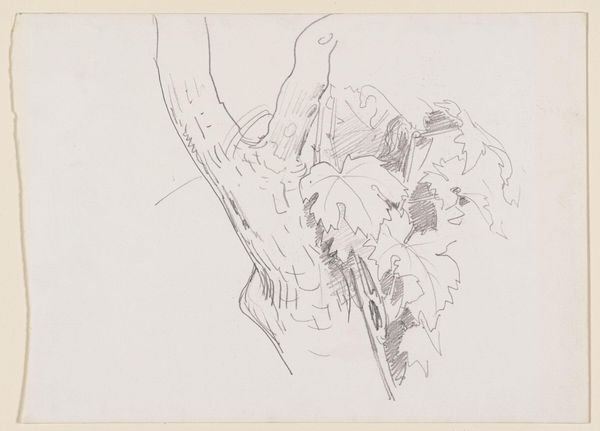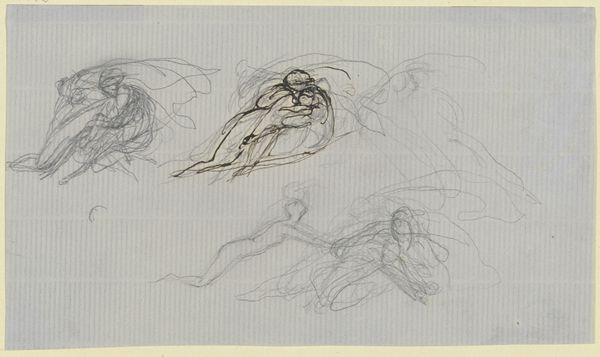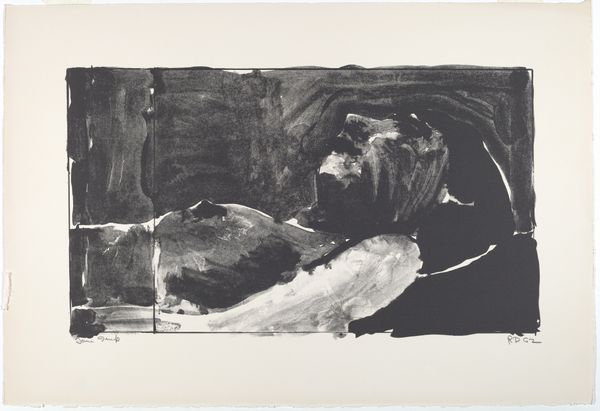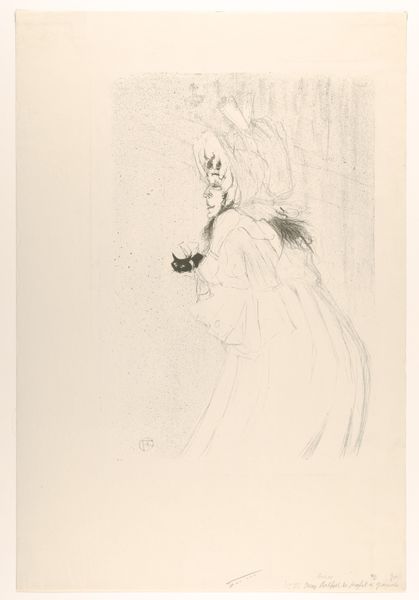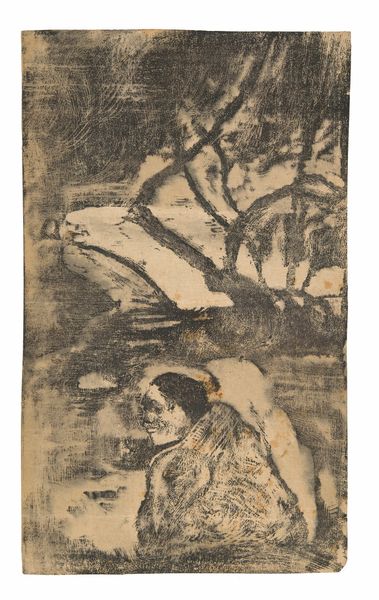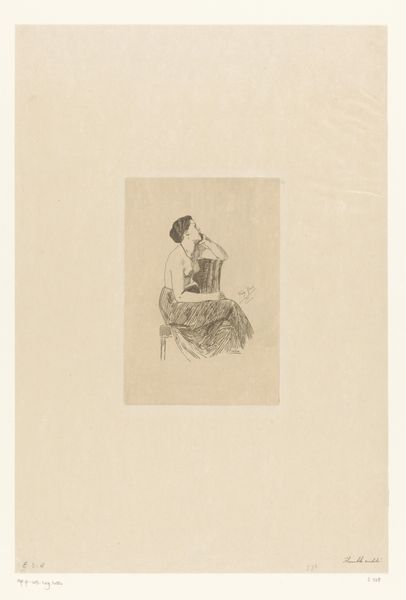
drawing, paper, pencil, graphite
#
portrait
#
drawing
#
animal
#
figuration
#
paper
#
pencil
#
graphite
Dimensions: height 406 mm, width 210 mm
Copyright: Rijks Museum: Open Domain
Curator: This is "Studie van gieren," or "Study of Vultures," attributed to Bernard Willem Wierink, dating from 1866 to 1939. It's currently held here at the Rijksmuseum. Editor: My initial impression is stark; a skeletal landscape. The monochrome palette really highlights the texture of the paper, lending a sense of fragility. Curator: The medium—pencil and graphite on paper—absolutely informs that fragility. The artist’s choice speaks volumes about the artistic labor involved and how these accessible materials could depict even difficult themes. How does the figuration strike you? Editor: The arrangement of the vultures is compelling. The dominant bird perches above, almost guarding the others sketched below. It leads my eye downwards, forcing me to acknowledge the… less resolved, perhaps more vulnerable forms below. Curator: Precisely! The graphite allows Wierink to achieve variations in tone and depth, mimicking the real textures of feathers. He is documenting observed material reality—while reminding the viewer of the harsh realities vultures represent within our own social contexts. Editor: The use of line is very economical, though. Note how few strokes are used to capture the essence of these creatures. And yet, it succeeds at capturing the weight, the preternatural patience we associate with them. It’s evocative. Curator: And this efficiency, dictated by the materials—pencil, graphite, paper—served the practical need of producing preparatory sketches that likely facilitated further work. Wierink skillfully utilizes the available resources, maximizing artistic creation with modest supplies. Editor: I find the negative space crucial as well. It isn’t merely background, but an active element contributing to the overall tension of the piece. What isn’t drawn is as significant as what is. Curator: Examining Wierink’s choices through the lens of material access highlights his ingenuity, shaping our comprehension of this study's aesthetic significance. The accessibility of these materials underscores the social democratization of art-making during that era. Editor: Looking at it again, it almost has a quality of a memory. The clarity of the central figure against the more blurred peripheral forms creates that feeling of something remembered but fading. Curator: Indeed, the layering of images and use of graphite enabled Wierink to encapsulate more than just a representational study, engaging also with broader ideas of documentation and societal representation. Editor: It makes me reconsider how much detail is truly needed to convey a feeling or a moment. Less can be more. Curator: Absolutely. Appreciating his craft deepens the richness of the "Study of Vultures," broadening its relevance far beyond mere technical ability.
Comments
No comments
Be the first to comment and join the conversation on the ultimate creative platform.
